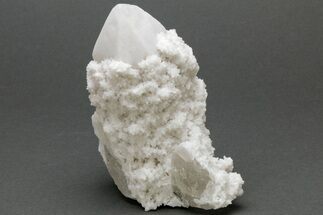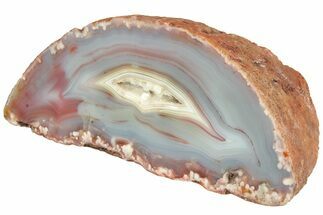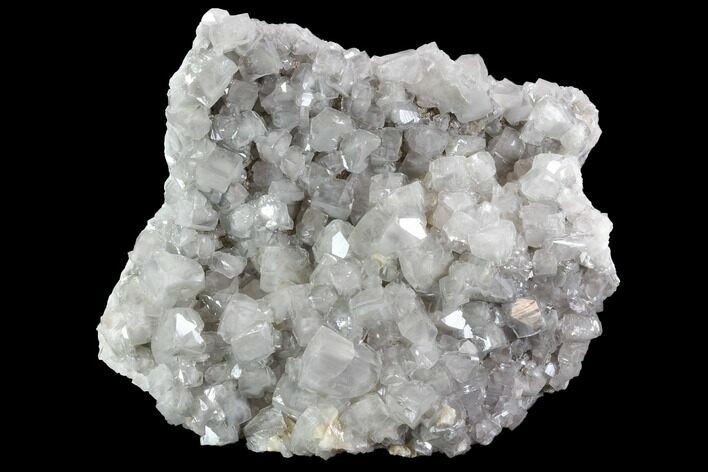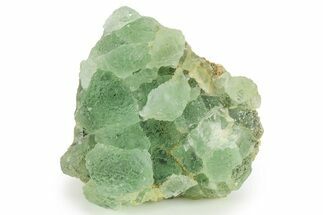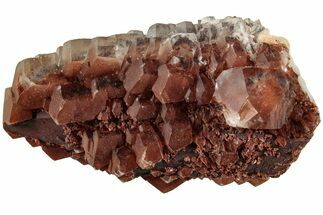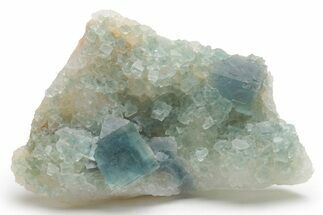This Specimen has been sold.
5.5" Calcite Crystal Cluster - China
This is a beautiful, lustrous calcite crystal cluster that was collected from Manoshan in the Hunan Province of China. The crystals are all in fantastic condition and fluoresce and faint orange color under UV lighting. Small amounts of dolomite can be found scarcely scattered throughout the specimen.
It comes with an acrylic display stand.
It comes with an acrylic display stand.
Calcite, CaCO3, is a carbonate mineral and the most stable polymorph of calcium carbonate. The other polymorphs are the minerals aragonite and vaterite. Calcite crystals are trigonal-rhombohedral, though actual calcite rhombohedra are rare as natural crystals. However, they show a remarkable variety of habits including acute to obtuse rhombohedra, tabular forms, and prisms. Calcite exhibits several twinning types adding to the variety of observed forms. It may occur as fibrous, granular, lamellar, or compact. Cleavage is usually in three directions parallel to the rhombohedron form.
Dolomite is an anhydrous carbonate mineral composed of calcium magnesium carbonate (CaMg(CO3)2).
The mineral dolomite crystallizes in the trigonal-rhombohedral system. It forms white, tan, gray, or pink crystals. Dolomite is a double carbonate, having an alternating structural arrangement of calcium and magnesium ions. It does not rapidly dissolve in dilute hydrochloric acid as calcite does. Crystal twinning is common.
Dolomite was first described by Carl Linnaeus in 1768, and in 1791 it was described as a rock by the French naturalist and geologist Déodat Gratet de Dolomieu. He first recognized the material in buildings of the old city of Rome, and later as samples collected in the mountains known as the Dolomite Alps of northern Italy.
The mineral dolomite crystallizes in the trigonal-rhombohedral system. It forms white, tan, gray, or pink crystals. Dolomite is a double carbonate, having an alternating structural arrangement of calcium and magnesium ions. It does not rapidly dissolve in dilute hydrochloric acid as calcite does. Crystal twinning is common.
Dolomite was first described by Carl Linnaeus in 1768, and in 1791 it was described as a rock by the French naturalist and geologist Déodat Gratet de Dolomieu. He first recognized the material in buildings of the old city of Rome, and later as samples collected in the mountains known as the Dolomite Alps of northern Italy.
SPECIES
Calcite
LOCATION
Manoshan, Hunan Province, China
SIZE
5.5" long, 4.8" wide
CATEGORY
ITEM
#91071
 Reviews
Reviews

